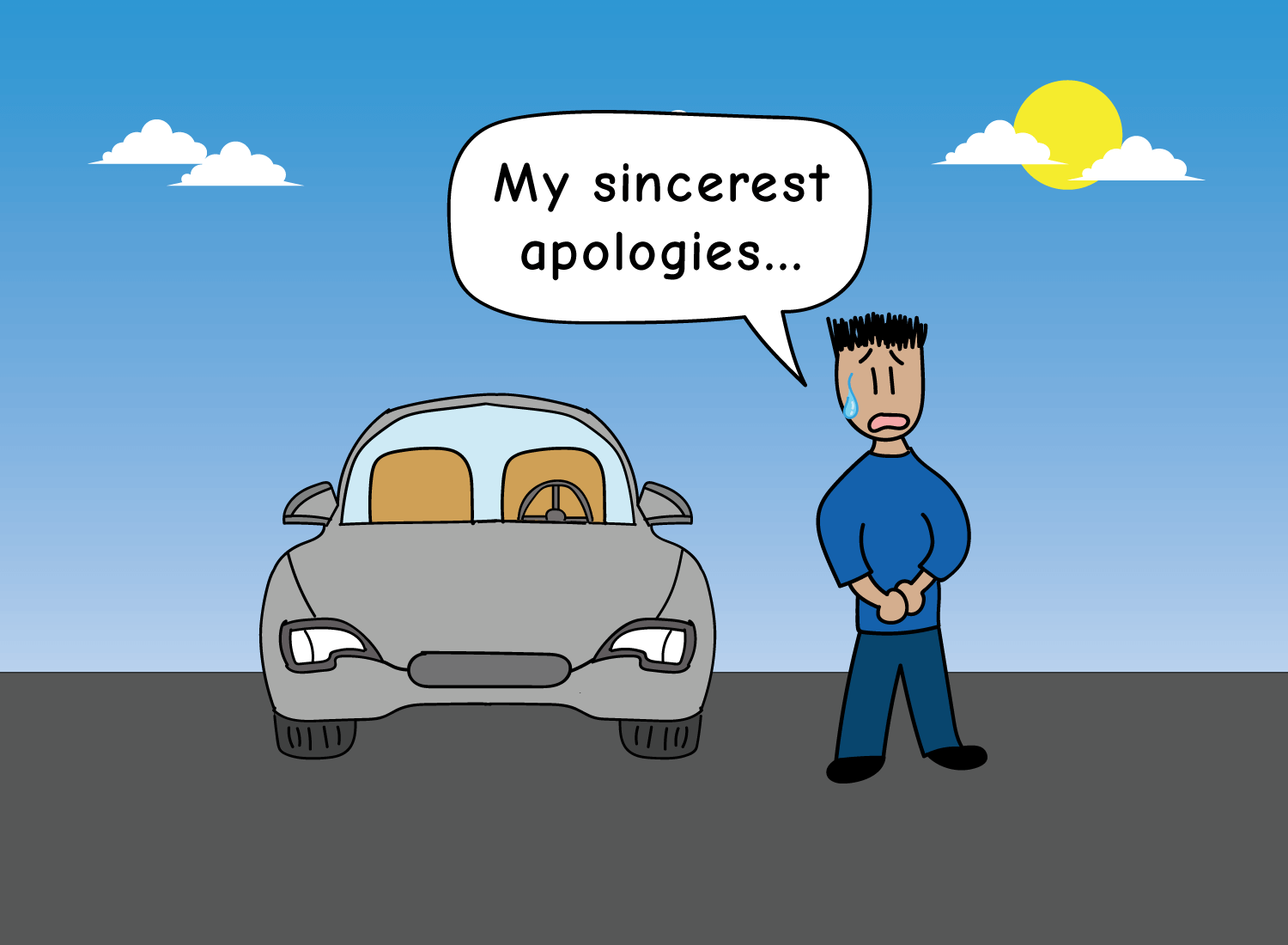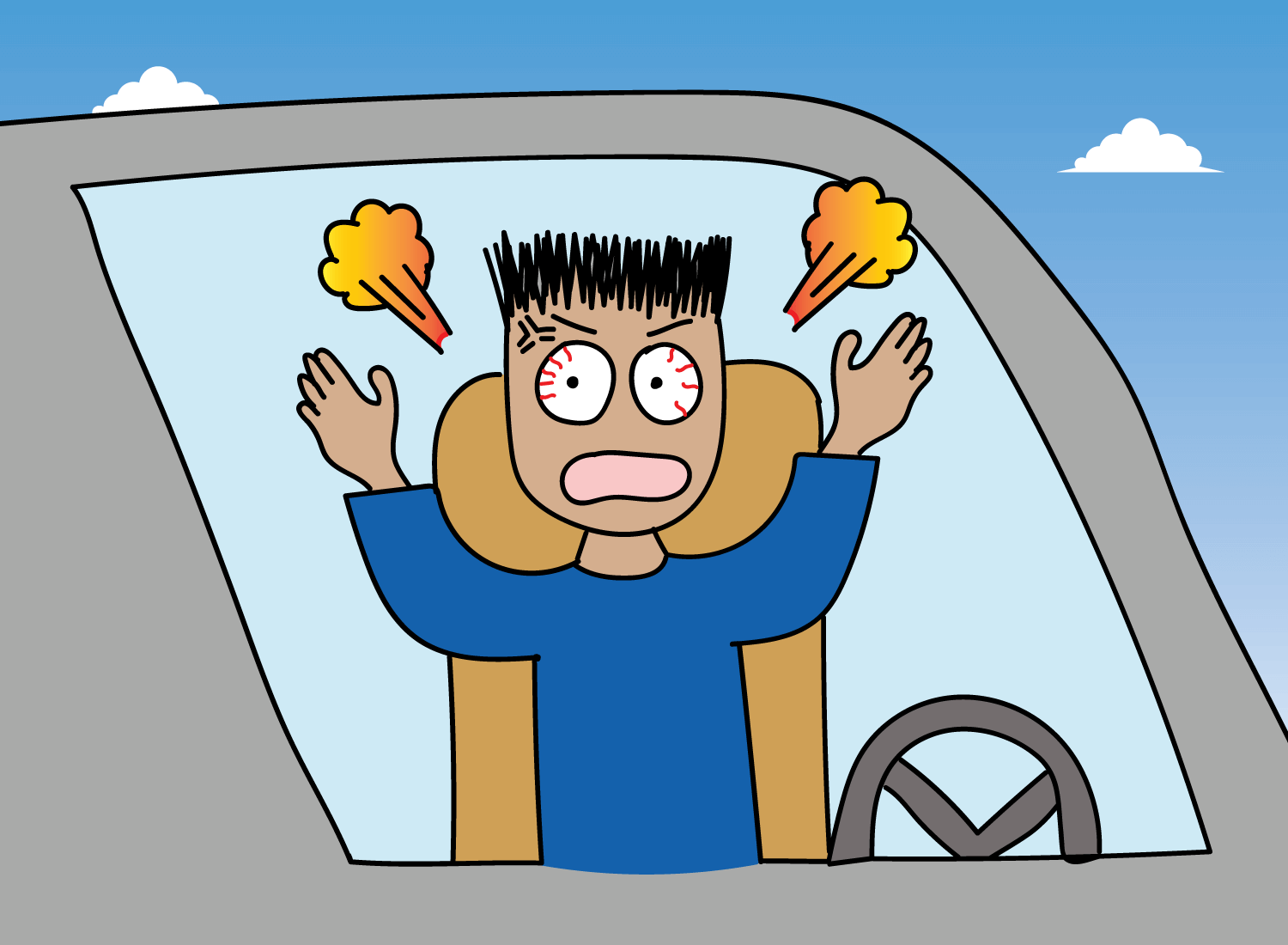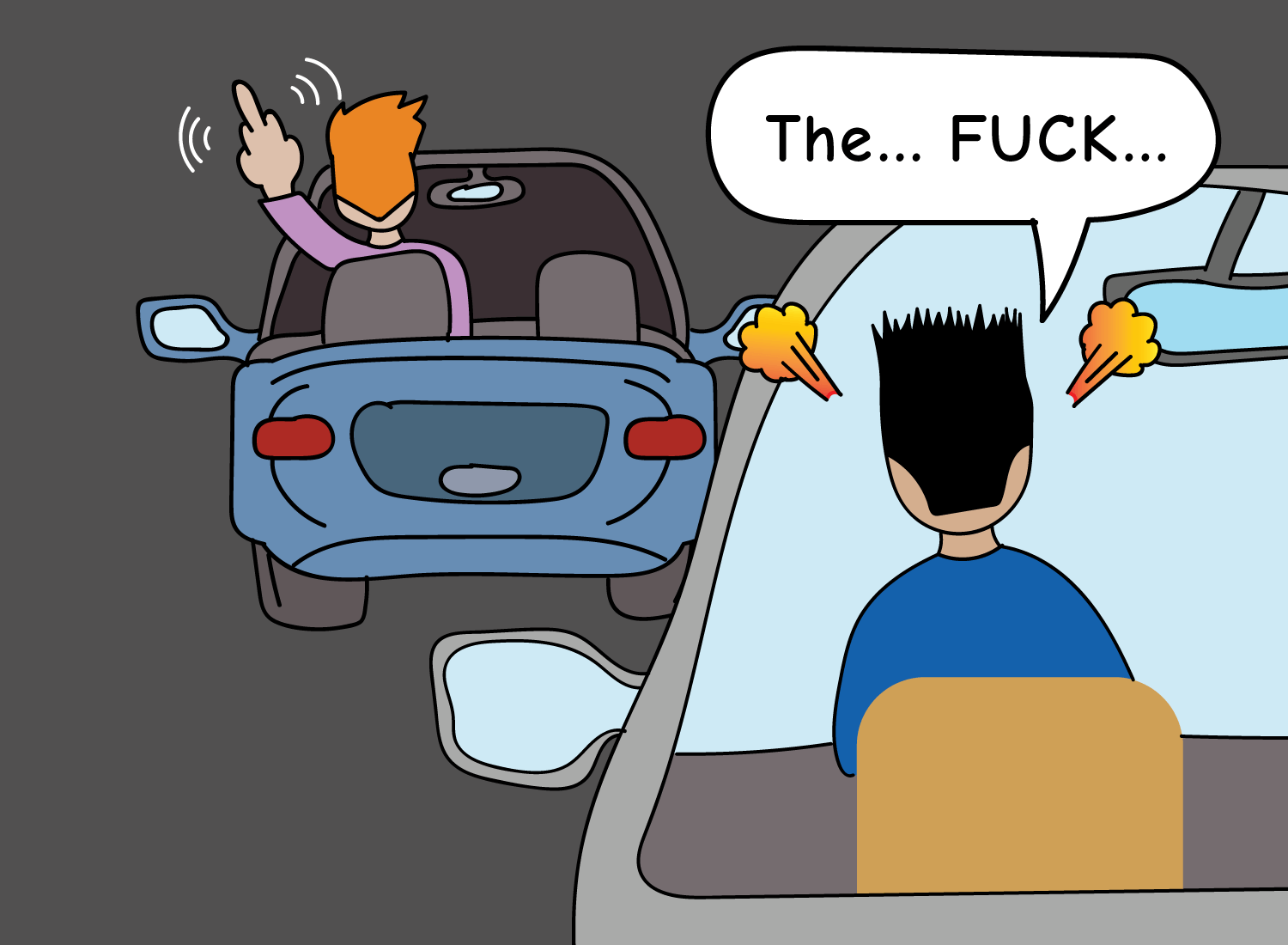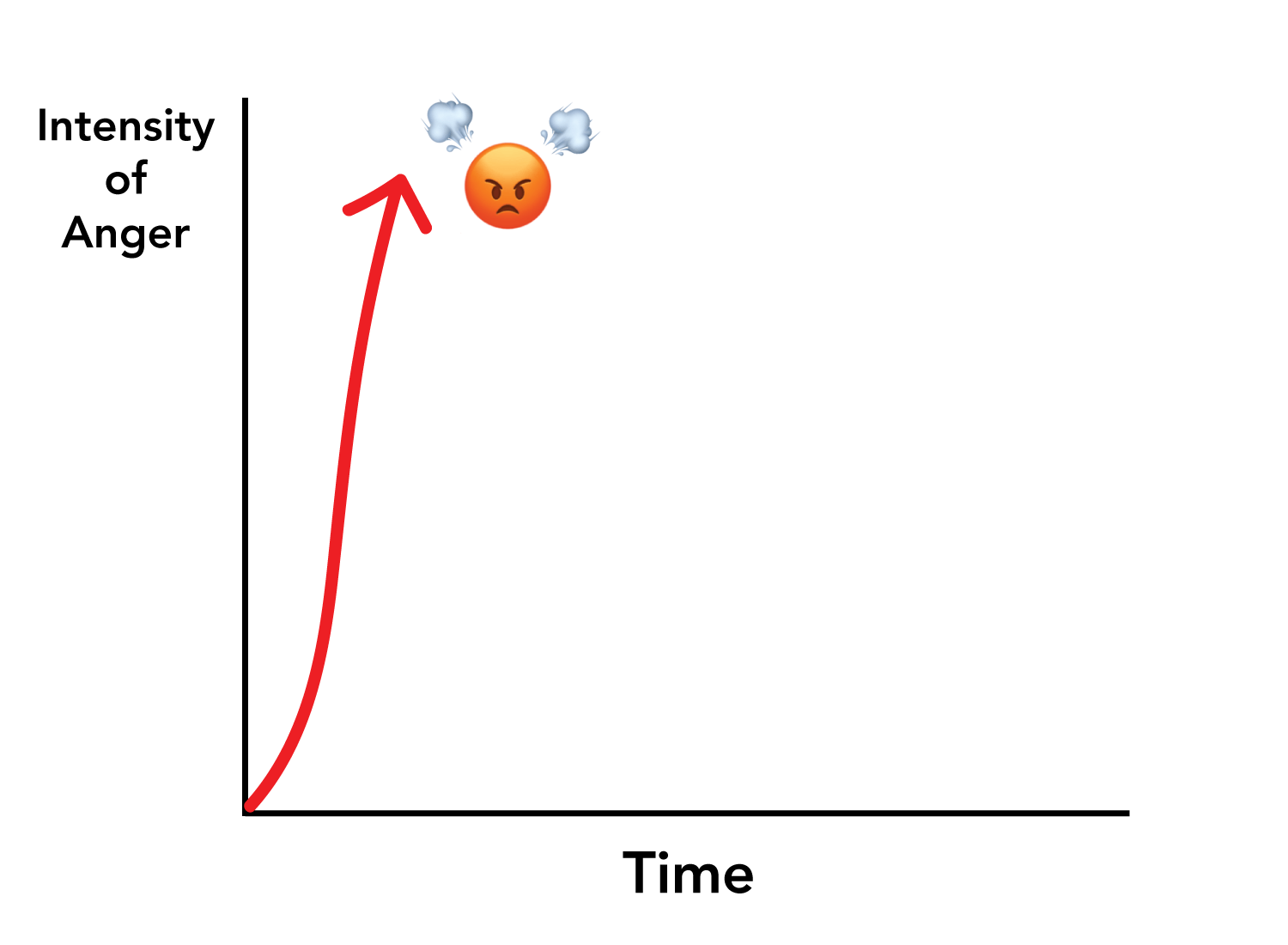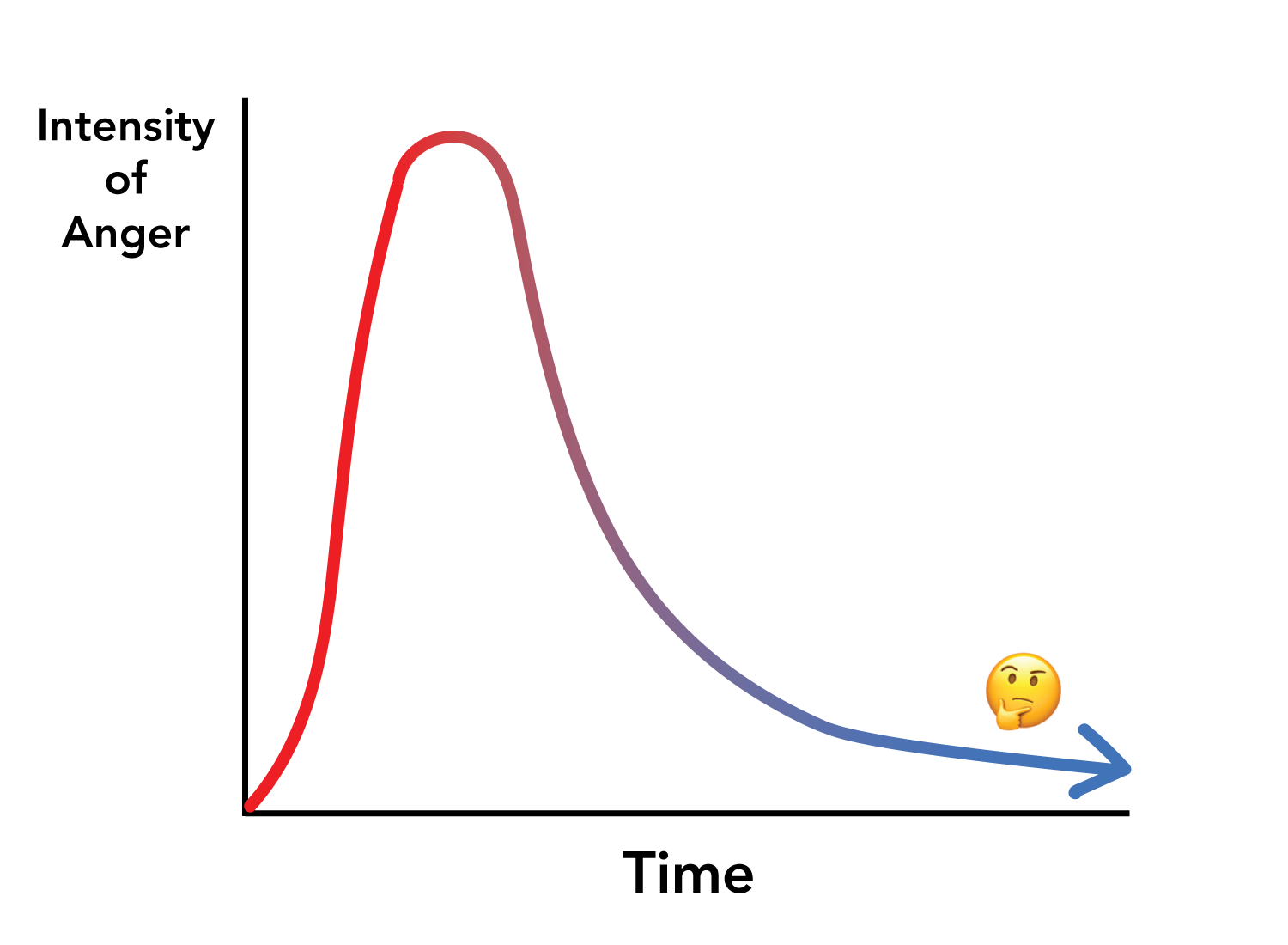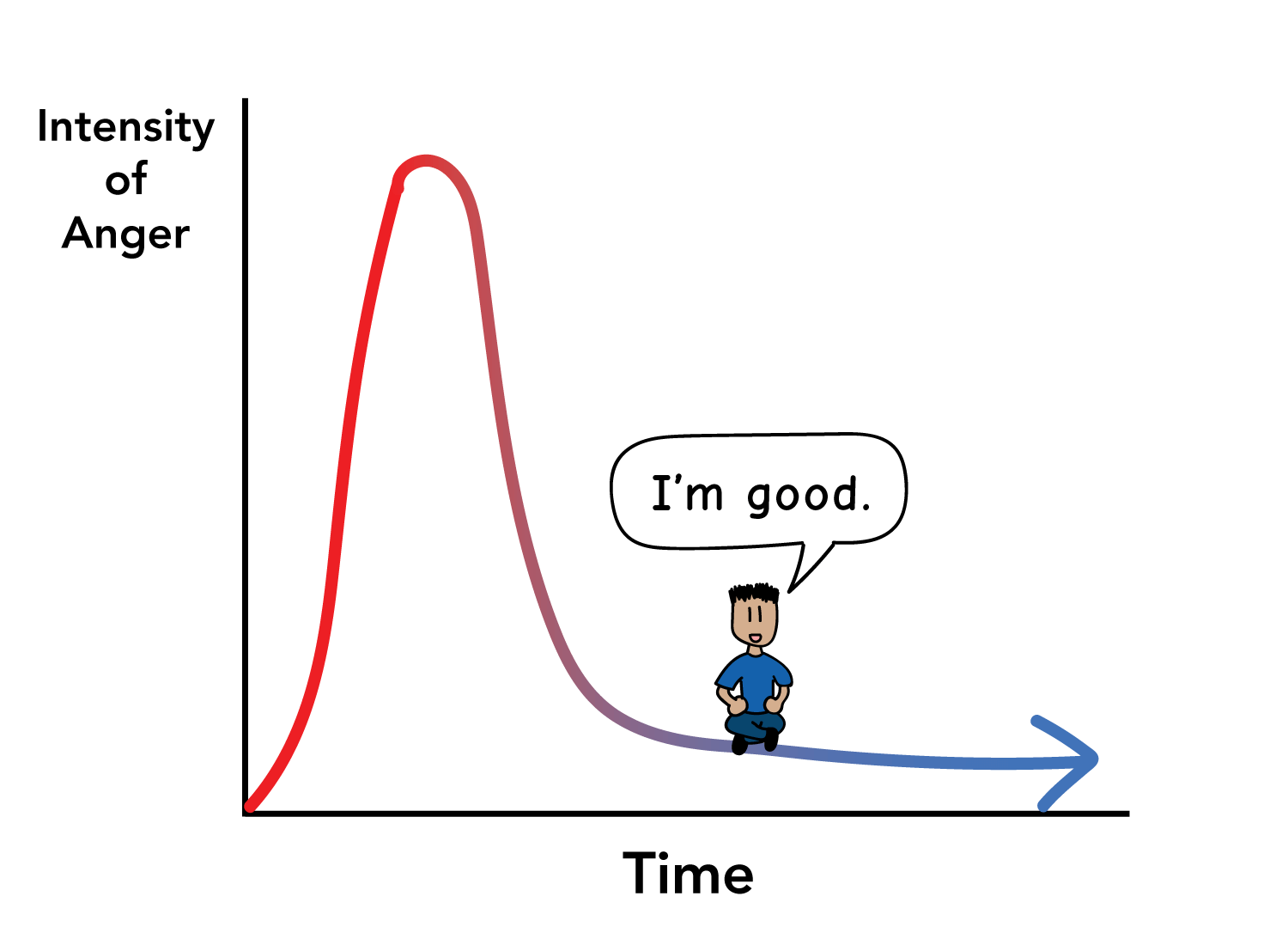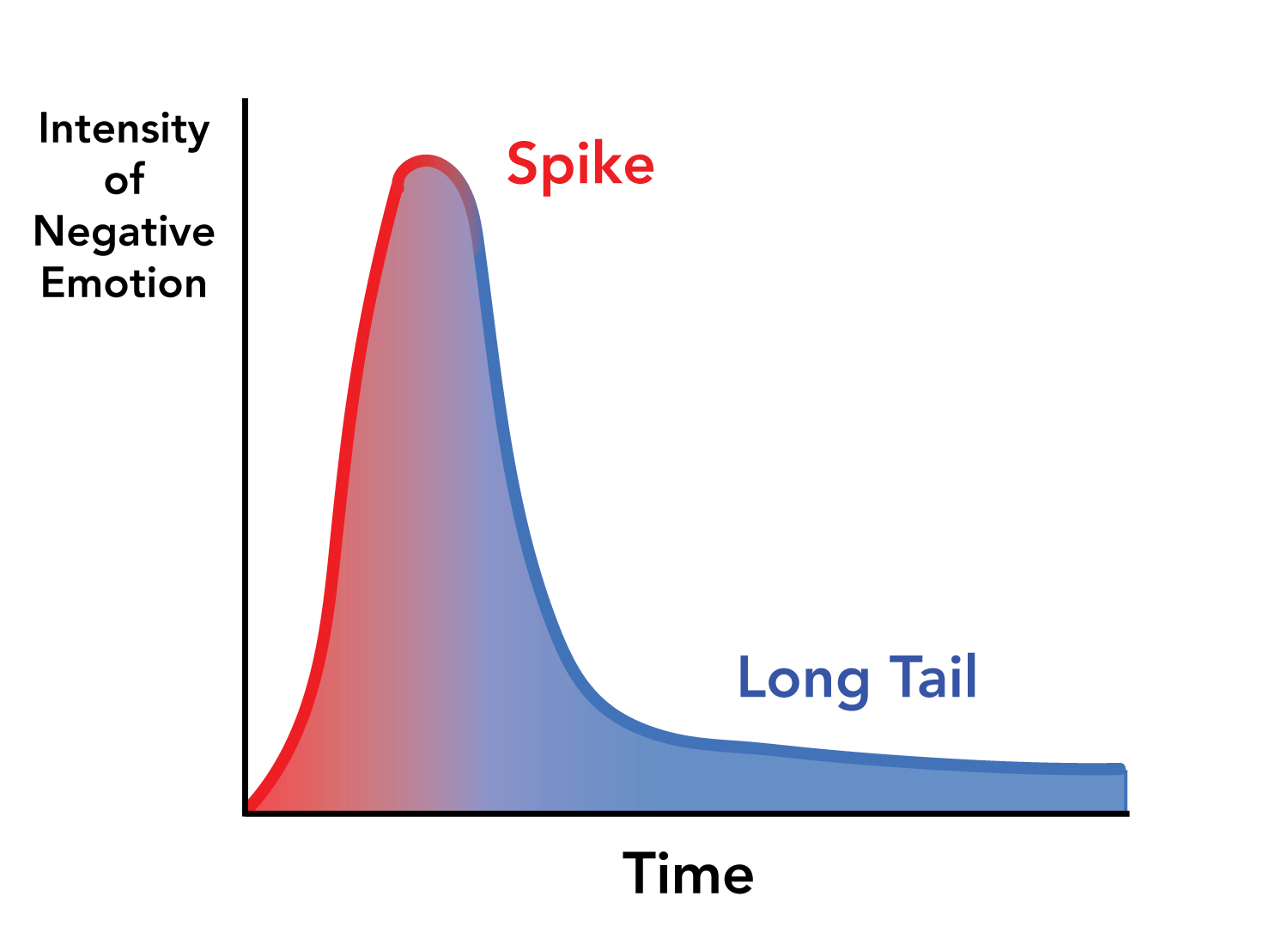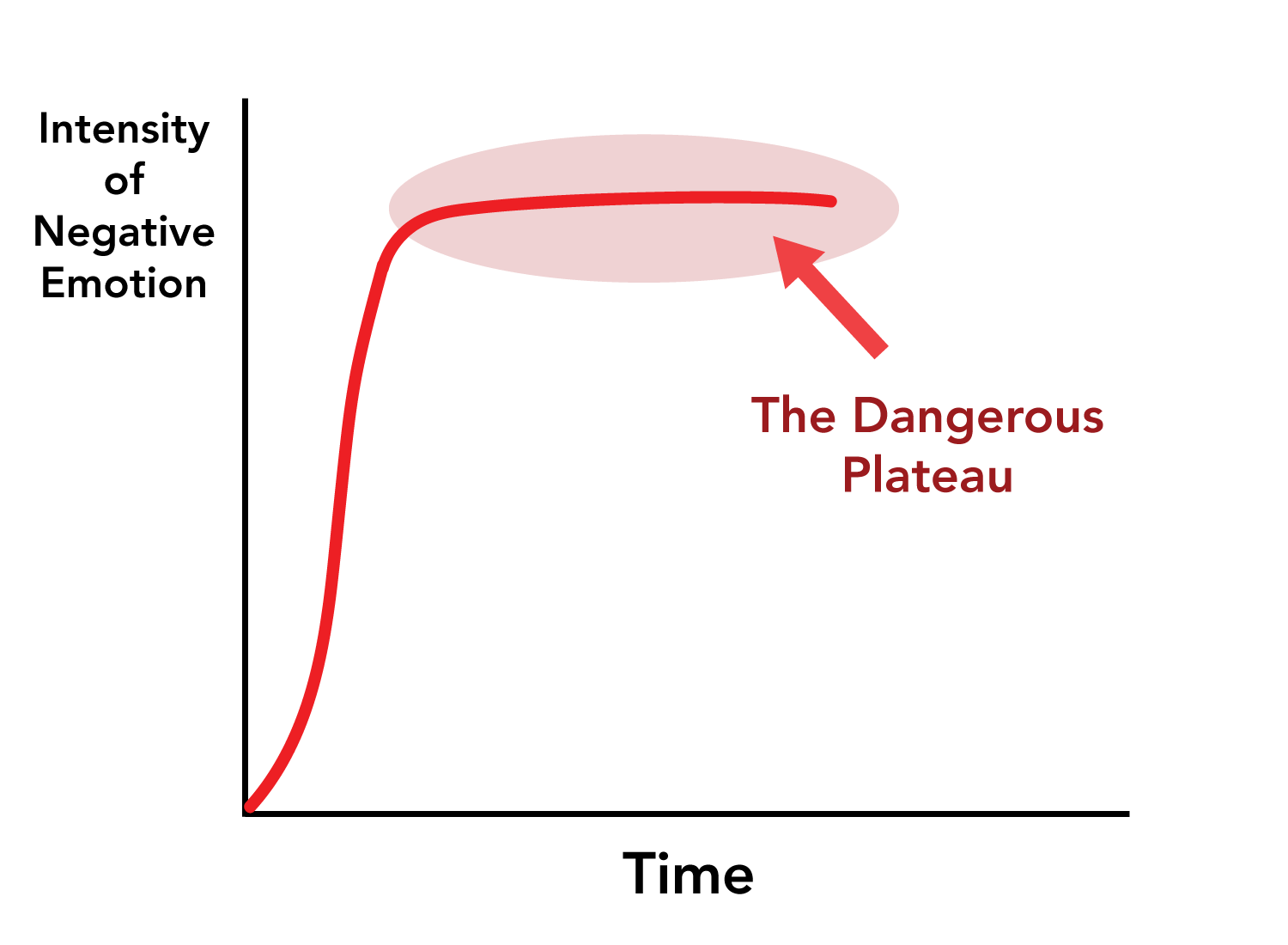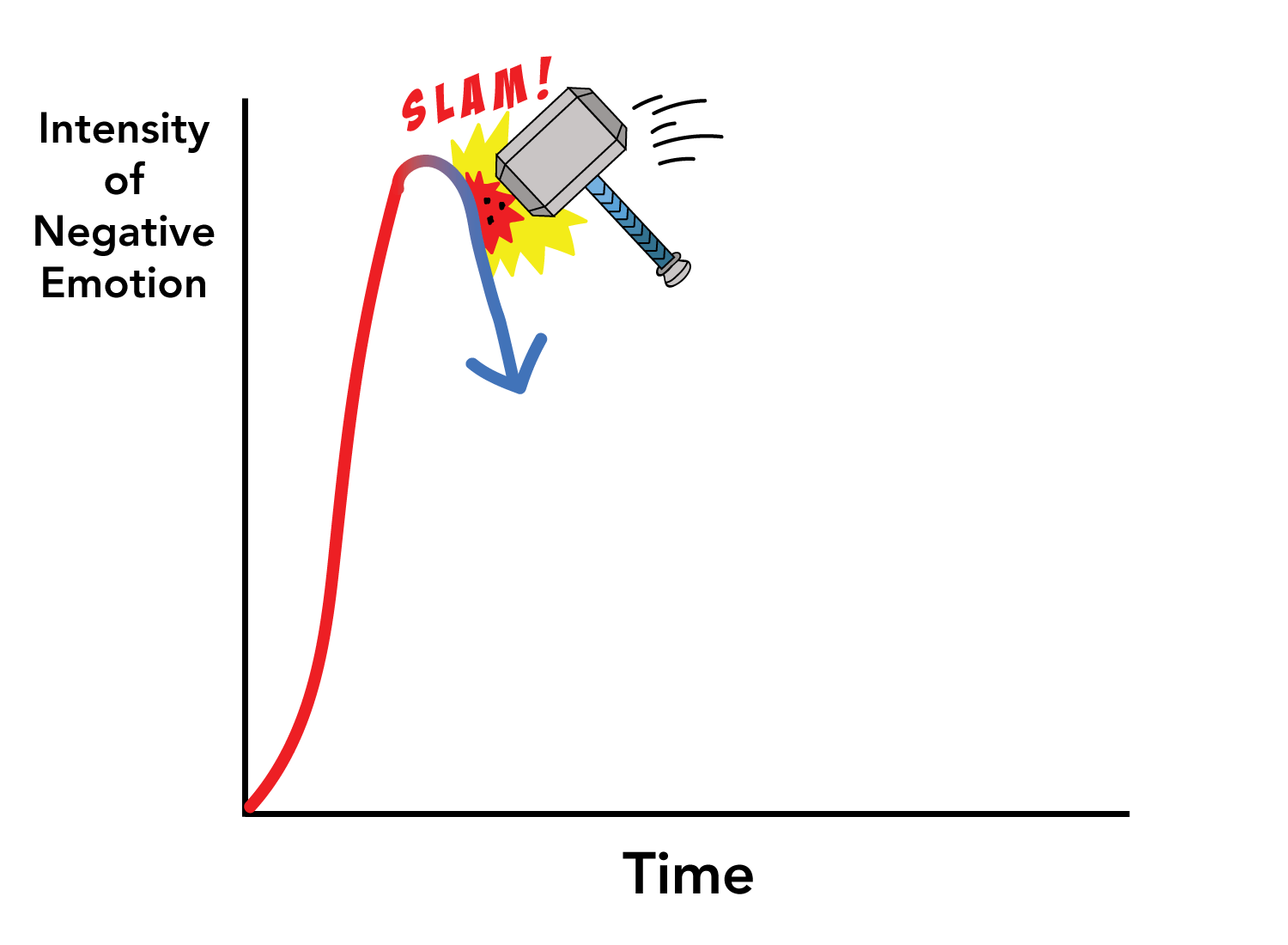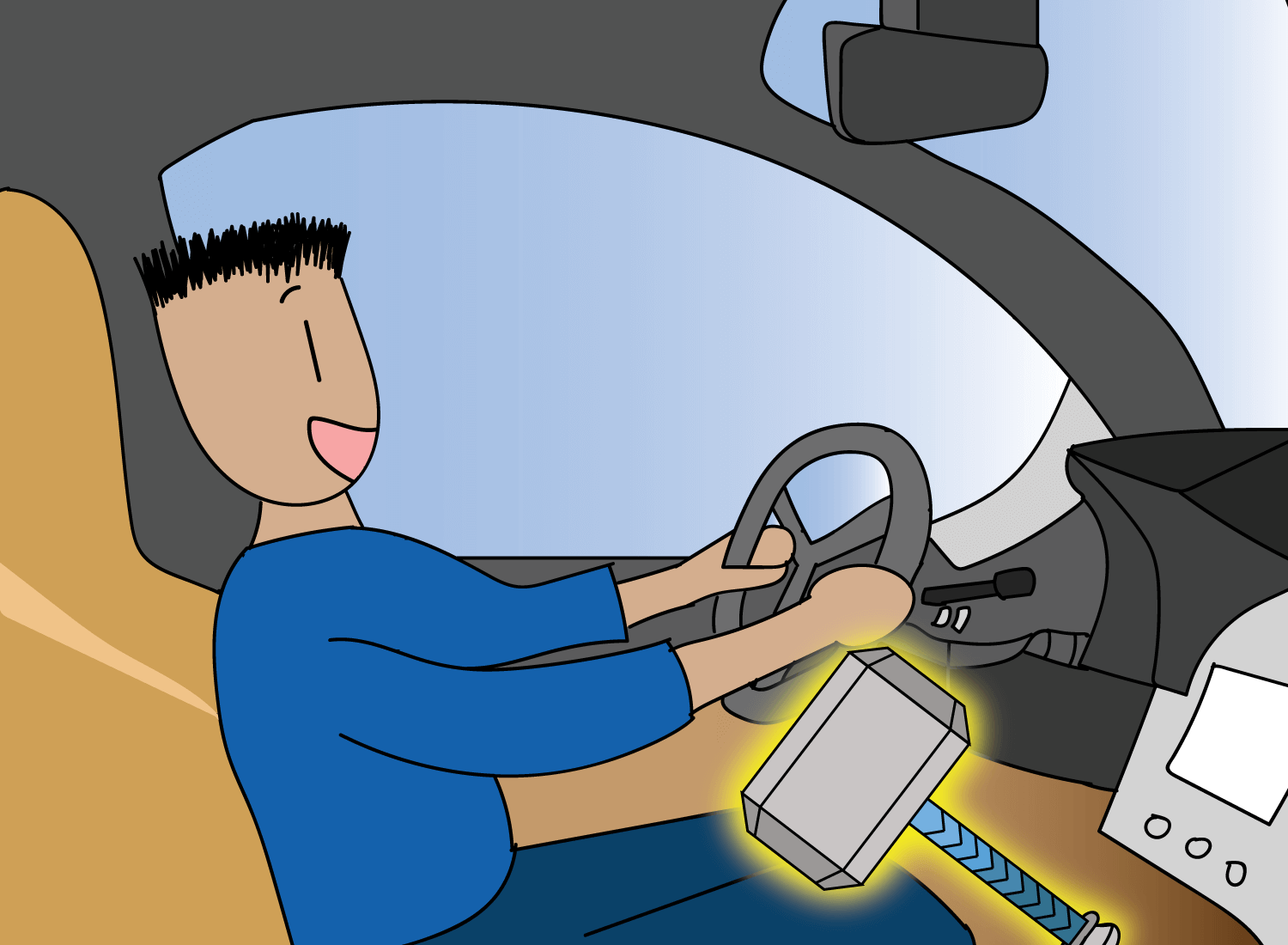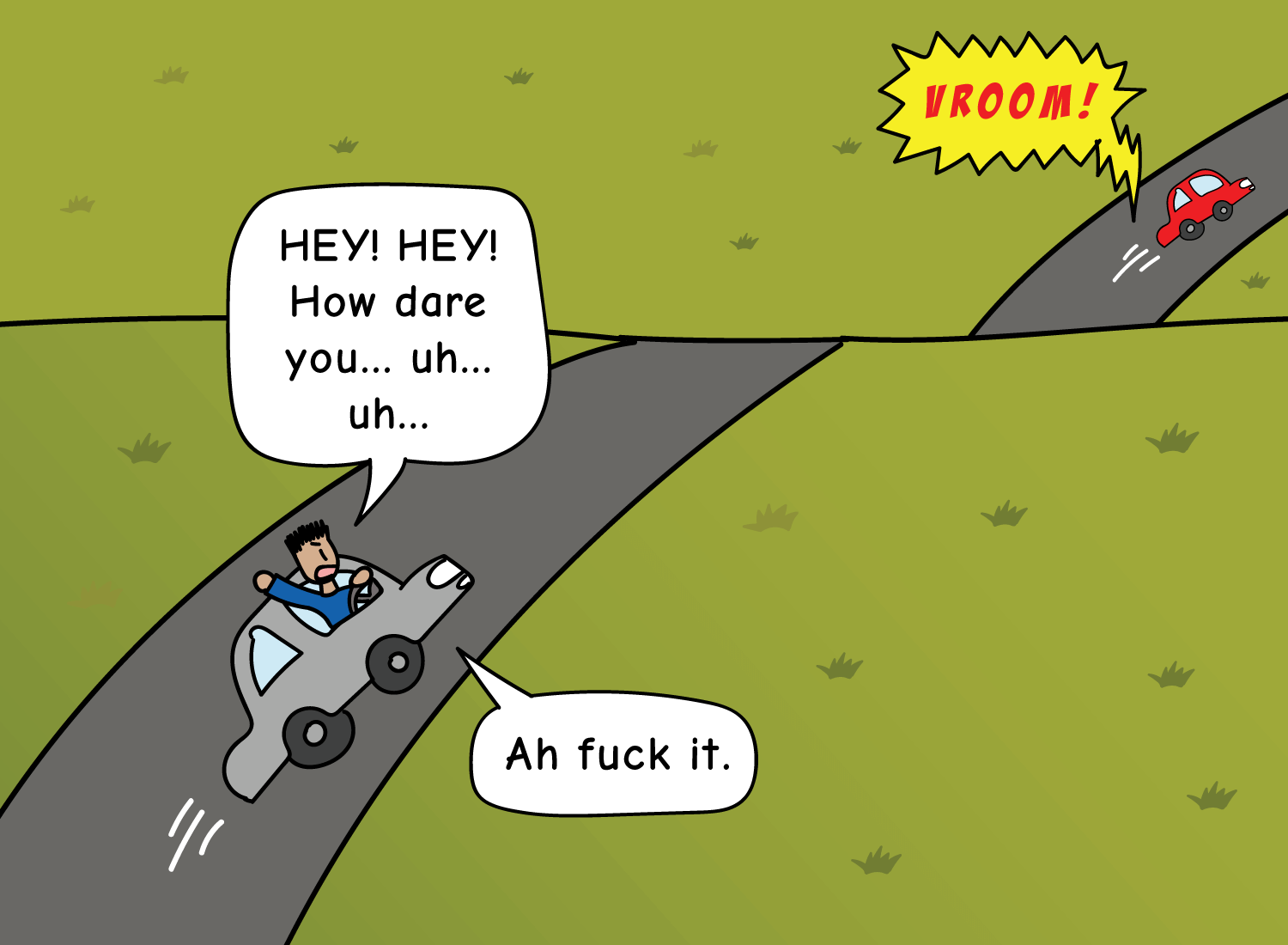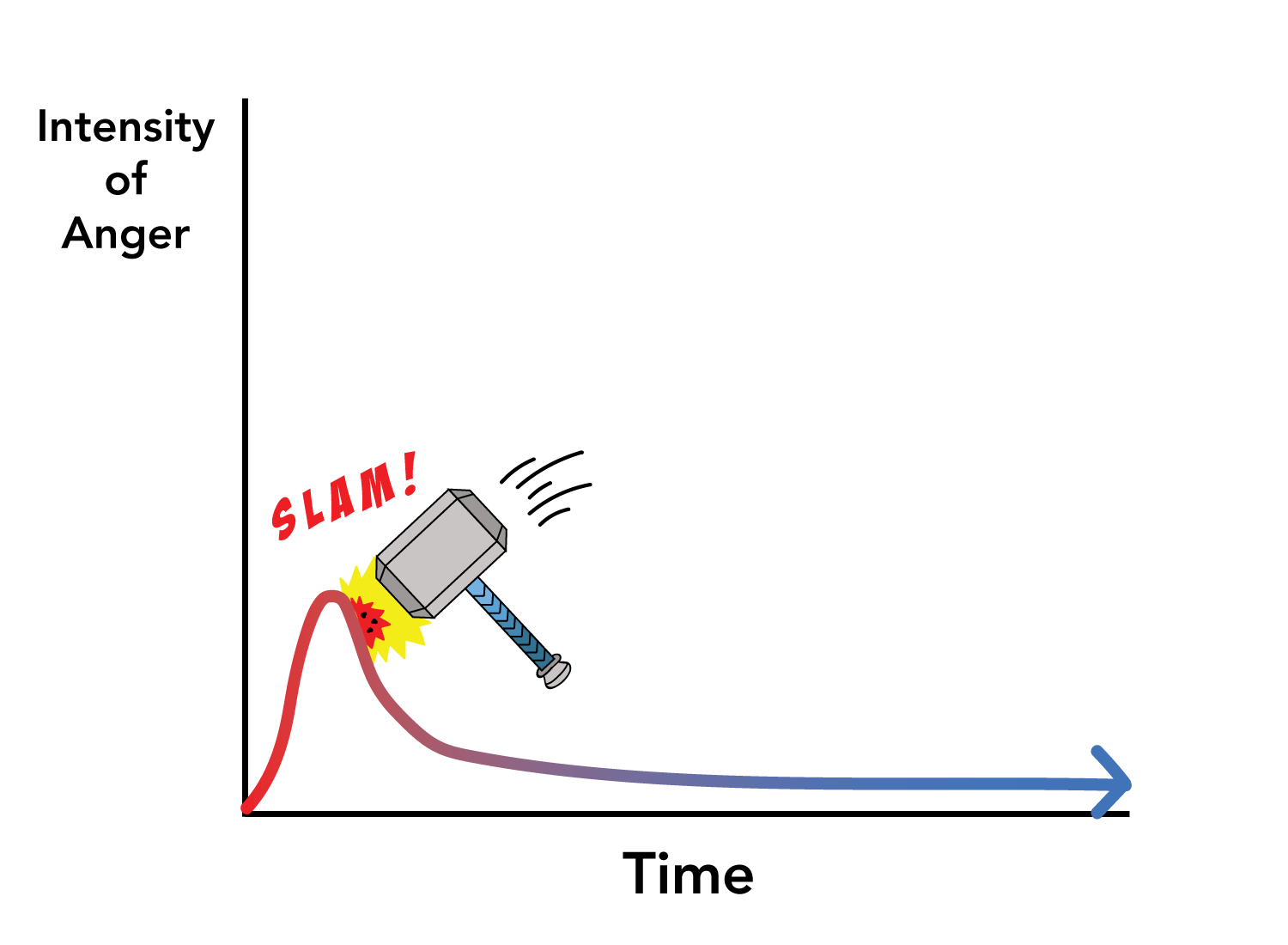The Long Tail of Negative Emotions
I want to start this post off with an apology – one that I’ve wanted to give for a while now.
To all those that were passengers in my car about 10 years ago, I’m deeply, deeply sorry.
I’m not much of an angry person, but admittedly, I used to struggle with road rage. I live in Los Angeles, a place that is notorious for its shitty traffic, which probably (most definitely) had something to do with it. Perhaps it was a combination of the city’s frantic energy and my youthful impatience, or maybe my impatience was the sole culprit here.
Regardless, my anger issues on the road would cause me to do some stupid things, even if there was a passenger accompanying me. Most of it was benign, like letting out a quick honk and then muttering some foul language underneath my breath. Other times it’d be concerning but still not that big of a deal, like speeding up so I could see the offender, and then giving him some incredulous look to signal my discontent.
But I remember one time where it hit me that I really had problems, and that I needed to make some changes.
A little under a decade ago, I was driving around town with my then-girlfriend / now-wife, when someone did a routine cut-me-off-at-the-traffic-light-manuever that happens all the time in this city.
The usual pang of anger struck, but what it took it to the next level was that he threw up a rather long middle finger, swaying it back and forth to let me know what he felt about my existence.
At this point, my anger became a full-on rage, and as he drove off, I quickly accelerated to tail him. Little did he know, this particular street had stop signs on every block, meaning that I’d be right behind him at every juncture, maniacally honking to let him know I was still there.
When he turned right, I turned right. When he went left, I did the same. This continued on for a few minutes as I chased him around aimlessly, honking like a crazy man with each open opportunity.
And oh yeah, my girlfriend was there beside me, the entire fucking time.
Eventually, the guy peeled off and the chase ended. I immediately felt a childish sense of righteousness afterward, but as the haze of anger subsided, the thickness of awkwardness took its place. Both my girlfriend and I didn’t have much to say for the rest of that car ride, and our day ended with me silently dropping her off at her place.
Let’s just say that I took her breath away… in the least romantic way possible.
This whole event made me pause for a while and think about what happened. Essentially, my prolonged anger during that episode obliterated my capacity for clear thinking. It clouded any ability to show good judgment, and it was only until after the haze lifted where some important, rational questions flooded my mind.
What would have happened if that guy was violent, and stopped the car to get out and fight? I would have endangered not just myself, but also my girlfriend.
Why did I have to act out on that anger for so long? If there was something I wanted to prove by extending it, all it did was further prove my stupidity.
Was anyone going to take away any valuable lessons from my response? No. All it did was make me look irresponsible, and the other guy sure as hell wasn’t going to learn anything positive from this.
It’s interesting how we become wise sages once the intensity of a negative emotion fades.
The thing about a negative emotion like anger is that when it arises, it peaks so suddenly that it clouds our rational judgment with an immediacy that is difficult to ignore:
What makes negative emotions so overwhelming is the physiological changes that accompany them. Anxiety materializes in the form of a tightened chest and an elevated heart rate. Anger is experienced as a ballooning of energy that erupts through the body. When this physiological onslaught disrupts your baseline, your rational faculties tend to undergo an immediate decline.
It is only when its intensity subsides where we can return back to a better version of ourselves. And it is only here where we can view the event objectively, and reflect on what that experience was about:
The thing about my road rage story was that after the initial surge of anger, I didn’t try to make it subside immediately. Instead, I let it carry onward at full capacity for a few minutes, which was more than enough time for me to do a ton of regretful things:
And of course, it was only after it subsided where I was able to recognize those stupid actions for how stupid they really were.
But if I were able to significantly decrease the duration of that emotion after it initially spiked, then I wouldn’t have done any of those things. Sure, I would have still felt the rush of anger when I first saw the swaying middle finger, but if I decreased its intensity immediately, I would have been back to my rational state very quickly.
This reveals something important about the anatomy of a negative emotion. Each of these emotions – anger, panic, fear, anxiety – are all characterized by two respective sections:
(1) The spike, or the immediate intensity that arises when the emotion is first felt, and
(2) The long tail, or the period in which its intensity is able to subside.
Oftentimes we focus on removing the spike itself, but this is an extremely difficult exercise. If someone yells a racial slur at you or says something mean about your family, you’re going to feel a spike of anger, whether you want to or not.
This is why telling someone with anger problems to “not be so angry” is bad advice. Not only is it smug, it’s also impractical. Anger rises instantaneously in response to unfavorable situations, and to not feel it at all would be akin to not being human.
Rather, what you can control is the long tail, or the duration of time in which that anger persists. You can choose whether or not you’re going to allow that anger to last for a while, or if you’re going to compress and dispel it in a matter of seconds.
The probability of you doing something regretful is directly correlated with how long you let a negative emotion persist. So if your long tail looks something like a plateau, then it’s best not to make any big decisions while you’re caught in the haze of it.1 Noticing that you’re in this danger zone will help you press pause on making any significant choices, which will help you return to your baseline in turn.
But the only way to prevent the formation of a plateau in the first place is to put a hammer to the spike as soon as it appears.
This is the Hammer of Awareness, and as its name indicates, it’s all about noticing when a negative emotion arises within you. This may sound trite, but this simple act is actually quite profound.
Most of the time, our minds are mere receptacles for the most prevalent mood we have. It becomes easy to mistake the presence of a mood for the character of our mind, given all the physiological changes that also accompany that emotion. We tend to interlink the two together, and move about our day without pausing to see how they can actually exist independently.
Awareness is what severs this illusion.
Awareness creates distance between mood and mind, allowing you to see that a change in emotional state does not say anything in particular about your capacity for reasoning. For example, being aware of the sudden emergence of anger allows you to isolate the anger, including its physiology. You had no say over whether that anger appeared or not; it just did. In fact, it almost felt like it invaded you, and tried to fog up your rationality as it ballooned up within.
Seeing this anger as a foreign entity with no real meaning allows you treat it as such. It doesn’t say anything about what your values are. It doesn’t carry any weight over who you are as a person.
The sooner the hammer comes down to remind you of this, the quicker the long tail bends back toward the baseline. We all carry this hammer in our back pocket, but depending on how high the initial spike is, sometimes we might forget that it’s there.
Practices like meditation can help remind us that this hammer is always available, but in the end, just noticing when you’re suddenly jerked away from your baseline goes a long way.
The Hammer of Awareness is a good way to shorten the duration of the long tail, but at this point, you may wondering:
Wouldn’t it be more effective to reduce the intensity of the spike itself? After all, that’s the real problem, right?
Yes to both questions, but the thing about reducing the height of any initial spike is that it takes a lot of time to do this. Whereas the long tail can be dampened immediately via awareness, the spike can only be lessened over time through sustained reflection.
It’s hard to know exactly where these spikes come from, and why they exist. Are Sam’s high anxiety levels due to his genetic predispositions, or a series of events that happened in his life? Is Jane’s paranoia the result of her upbringing, or is it about a fundamental distrust she has of the world? Maybe it’s a combination of everything?
Understanding the nature of these spikes is important to get to the root of the problem, but it takes a lot of introspection, practice, and time. Even something relatively minor like my road rage took years for me to eventually overcome.
In my case, I realized that my anger on the road was born of some warped sense of justice I had about those that “did me wrong.” There were many assumptions I was making, all of which were faulty or erroneous.
I assumed that people were cutting me off intentionally, when in reality, they simply may not have even seen me. They might have been rushing back home to see their family after a hard day’s work, or they might have been tired. Who knows? I certainly didn’t.
And even if they did intentionally cut me off, how will I even go about seeking retribution? Justice implies that a certain consequence is delivered, and that the offender is present to experience said consequences. I don’t have the authority to give the guy a ticket, and by the time I want to make my frustration known, the person has already sped off.
Finally – and most crucially – I understood that the road was just a terrible place to hang my pride on. Not only would I never see the “recipient” of my anger ever again, but having that anger accomplishes worse than nothing. If I wanted to allocate my pride to somewhere fruitful, I might as well invest it into my work.
Over time, I internalized these points into my chain of reasoning, and put them into practice whenever I needed to. Slowly but surely, the initial spike of my road rage grew less and less noticeable, almost to the point where I barely feel it now. If someone were to swerve in front of me today and give me a rapid fire of middle fingers, I’d be impressed, but not angry. And even if anger were to arise, my Hammer of Awareness would be there to smash it down ASAP.
So yes, it’s certainly possible to decrease the initial spike, but the more you struggle with that emotion, the more work and time will be required to see any changes. Much of this is outside your immediate control, but what is in your control is what you choose to do with the long tail.
Can you be aware of a negative emotion’s presence the moment it arises?
Will you allow it to last for hours, when just a few seconds will do?
How will you retain the resilience you know that you have?
While you can’t control what you feel, you can control how long you ought to feel it.
And that, crucially, makes all the difference.
_______________
_______________
Related Posts
Negative emotions, while they hurt in the moment, can be a sign of future progress:
Shocks, Setbacks, and the Slowdown of Time
A timely case study in managing today’s environment:
Finding Peace Within the Pandemic
A reminder that positive emotions aren’t the key to happiness:
